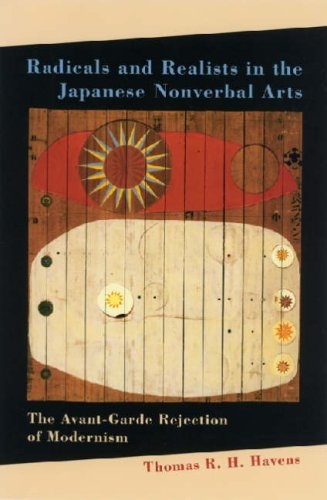Radicals and Realists in the Japanese Nonverbal Arts: The Avant-Garde Rejection of Modernism
- About the Book
-
Radicals and Realists is the first book in any language to discuss Japan’s avant-garde artists, their work, and the historical environment in which they produced it during the two most creative decades of the twentieth century, the 1950s and 1960s. Many of the artists were radicals, rebelling against existing canons and established authority. Yet at the same time they were realists in choosing concrete materials, sounds, and themes from everyday life for their art and in gradually adopting tactics of protest or resistance through accommodation rather than confrontation. Whatever the means of expression, the production of art was never devoid of historical context or political implication. Focusing on the nonverbal genres of painting, sculpture, dance choreography, and music composition, this work shows that generational and political differences, not artistic doctrines, largely account for the divergent stances artists took vis-a-vis modernism, the international arts community, Japan’s ties to the United States, and the alliance of corporate and bureaucratic interests that solidified in Japan during the 1960s.
After surveying censorship and arts policy during the American occupation of Japan (1945–1952), the narrative divides into two chronological sections dealing with the 1950s and 1960s, bisected by the rise of an artistic underground in Shinjuku and the security treaty crisis of May 1960. The first section treats Japanese artists who studied abroad as well as the vast and varied experiments in each of the nonverbal avant-garde arts that took place within Japan during the 1950s, after long years of artistic insularity and near-stasis throughout war and occupation. Chief among the intellectuals who stimulated experimentation were the art critic Takiguchi Shuzo, the painter Okamoto Taro, and the businessman-painter Yoshihara Jiro. The second section addresses the multifront assault on formalism (confusingly known as “anti-art”) led by visual artists nationwide. Likewise, composers of both Western-style and contemporary Japanese-style music increasingly chose everyday themes from folk music and the premodern musical repertoire for their new presentations. Avant-garde print makers, sculptors, and choreographers similarly moved beyond the modern—and modernism—in their work. A later chapter examines the artistic apex of the postwar period: Osaka’s 1970 world exposition, where more avant-garde music, painting, sculpture, and dance were on display than at any other point in Japan’s history, before or since.
Radicals and Realists is based on extensive archival research; numerous concerts, performances, and exhibits; and exclusive interviews with more than fifty leading choreographers, composers, painters, sculptors, and critics active during those two innovative decades. Its accessible prose and lucid analysis recommend it to a wide readership, including those interested in modern Japanese art and culture as well as the history of the postwar years.
- About the Author(s)
-
Thomas R. H. Havens, Author
Thomas R. H. Havens is professor of history at Northeastern University.
- Reviews and Endorsements
-
"Tom Havens’ indispensable new book provides a magisterial guide to the postwar Japanese avant-garde in the nonverbal arts. His dozens of interviews preserve the views of the artists, capturing the way they spoke and thought about themselves and their art. At the same time, Havens is a critical listener and reliable guide, parsing the self-serving from the perceptive in what his subjects have to say." —David Goodman, University of Illinois, Urbana-Champaign"Thomas Havens has written the first history in English of the Japanese artistic avant-garde from the end of the Second World War to 1970, the year typically cited as the last for the postwar avant-garde. Meticulously researched and written in impeccably clear and jargon-free prose, the book is particularly rich in material garnered through personal interviews of the principals of the period. This is a book for readers interested in modern Japan and those interested in modern and contemporary art in general." —John Whittier Treat, Yale University
"Extensive endnotes and bibliography round out this important work of scholarship. Highly recommended for anyone curious about Japan's dynamic post-occupation arts scene." -- Craig Bunch, ART BOOK, 14:2 (2007) "With its emphasis on novel crossmedia experimentation and interarts collaboration-in my opinion its most exciting aspect-Haven's book is sure to be a catalyst to scholarly conversation, and perhaps even innovative collaboration, across disciplines. Should it encourage the rest of us to rethink the boundaries and assumptions that have come to shape our own fields and scholarly projects, and to glimpse new potentials therein, its contribution will indeed be fruitful and lasting." -- Alicia Volk, University of Maryland, Journal of Japanese Studies, Vol 36:2 (2010)
—http://www.uhpress.hawaii.edu/p-4391-9780824830113.aspx
- Supporting Resources
-










